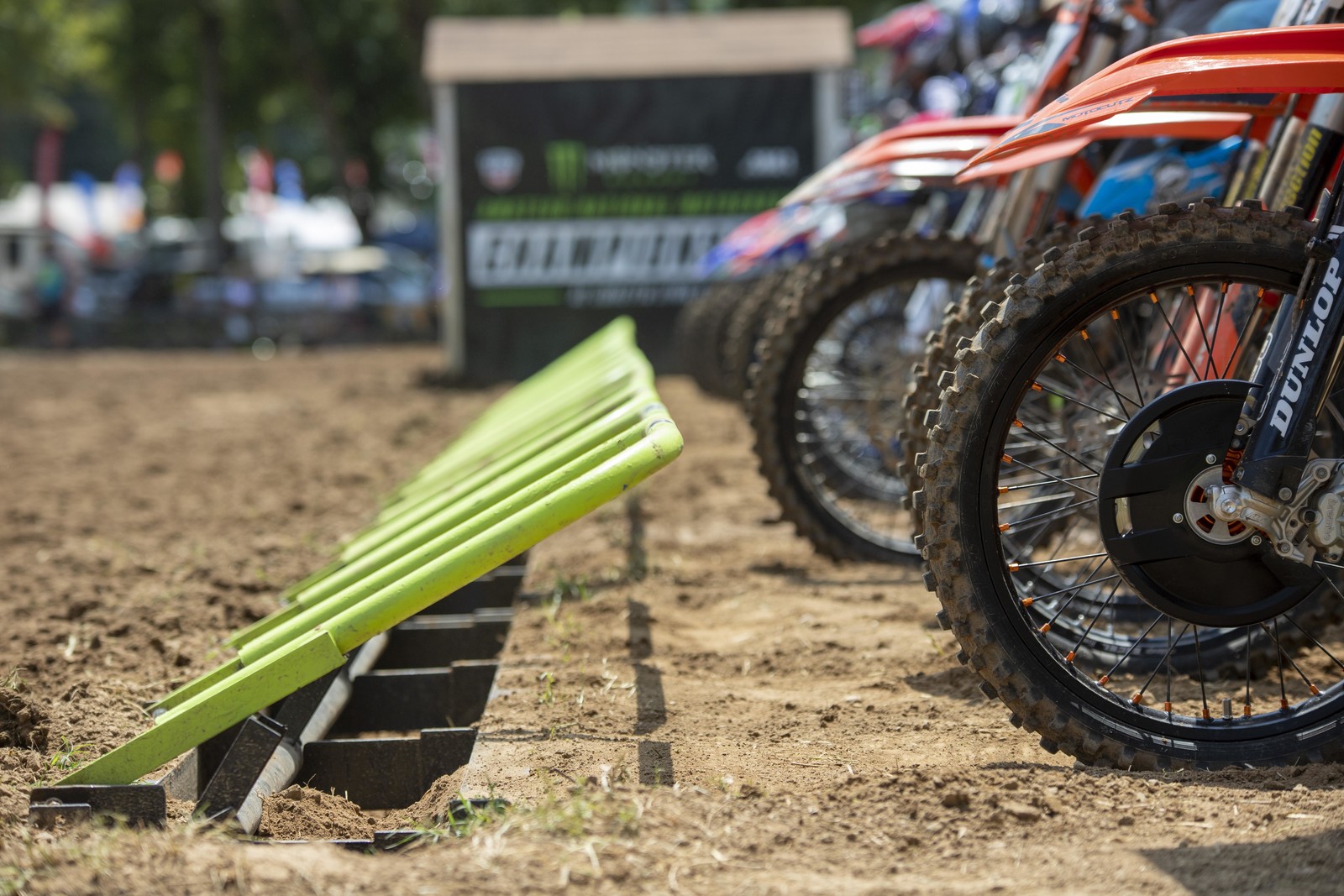Dirt Bike Oil: 2-Stroke vs. 4-Stroke
How to Choose the Right Oil For Your Dirt Bike
There's a size-able difference between 2-stroke vs. 4-stroke dirt bike oil, but choosing the right one for your needs is relatively simple once you understand the characteristics of each. To begin with, engine oil for dirt bikes is similar in one regard to the oil used in cars: each manufacturer has specific recommendations. In other words, different engines call for different engine oil. It’s vitally important that you follow the recommendations of the manufacturer. After all, they built your dirt bike and know exactly what it needs to maintain peak performance. Failing to follow the owner’s manual can not only affect performance but also lead to costly repairs.
So, what is the best dirt bike oil? What are the differences between 2-stroke oil and 4-stroke oil? We turned to an industry expert, Michael Goldman, to help answer our questions. Goldman is the VP of Sales for Maverick Performance Products. Maverick is a leading marketer and manufacturer of automotive, commercial, and industrial lubricant products with its headquarters based in Chandler, Arizona. Additionally, they’re one of the fastest-growing companies in the U.S. petroleum marketplace.
2-Stroke vs. 4-Stroke Engine
Before we dive into engine oils, we should briefly discuss 2-stroke vs. 4-stroke engines. As Goldman explains, “A stroke is a motion of a piston, meaning a two-stroke engine has two different motions of the piston. A four-stroke has four positions during the combustion cycle.” When it comes to 2-stroke dirt bike engines, Goldman says, “They use either a premixed fuel/oil combination or a system that injects the oil into the combustion chamber to mix with the fuel.” Another key point according to Goldman is that “Two-strokes [engines] generally make both more power higher in the RPM range and accelerate faster. A four-stroke makes more torque down low, which allows for higher gearing and more top-end speed.”
Furthermore, dirt bike engines typically operate at or above 50% of their maximum revs, while a street motorcycle engine lives in the quarter-throttle range.
2-Stroke vs. 4-Stroke Oil
Let’s break down the differences between 2-stroke vs. 4-stroke dirt bike oil. As has been noted, 2-stroke dirt bike oil lubricates engine components by either mixing with the fuel or by spraying during the combustion process. Therefore, the oil contains components that promote its combustion. However, “A 4-stroke engine uses oil that flows from the crankcase to lubricate the engine components, and then comes back to the crankcase,” Goldman notes, “and the oil circulates without being burned,” he adds.


Weight classification is another key difference. Two-stroke engine oil is a single viscosity (weight) oil with very few additives. They design those few additives to burn as cleanly as possible. Goldman points out that they rate 2-stroke oil by JASO specifications. Those specs have a viscosity requirement that the oil needs to meet. VP’s Powersports X2 engine oils meet the newest JASO-FD specifications.
In contrast with 2-stroke oil, Goldman tells us, “4-stroke engine oil has a lot of different additives and long-chain polymers to give it the multigrade ratings.” For example, 10w-40 and 10w-50. He goes on to say of 4-stroke oil that “it has corrosion inhibitors in addition to detergents that hold particles in suspension until you drain the oil, as well as other requirements.”
In case you’re wondering what might happen if you mix the two, Goldman warns that using a 4-stroke oil in a 2-stroke engine can not only disrupt combustion but also cause smoke formation and engine degradation.
What’s the Best 2-Stroke Dirt Bike Oil?
We asked Goldman what he would recommend as the best 2-stroke oil for dirt bikes. He says, “VP’s X2 500 synthetic blend and X2 full synthetic 2-stroke oils are specifically formulated for today’s high-performance off-road engines,” adding that “their state-of-the-art additive package and clean-burning ester-based synthetics deliver optimal performance and reduce wear. They keep your engine performing at its peak.”
Motorcycle Oil vs. Car Oil
When it comes to 4-stroke dirt bike oil, there are a variety of weights [viscosity]. The most common is 10w-40. When shopping for oil, you might wonder if it’s alright to use automotive engine oil in your 4-cycle dirt bike. Don’t do it. It is important to realize the differences between motorcycle oil vs. car oil. "Firstly, a passenger car motor oil doesn't have the additives needed to meet JASO MA2 specs, which specify the rating for wet clutch applications," Goldman says. Not to mention, “The demands placed on dirt bike racing engines are extremely high. As a result, film strength and thermal stability are required to keep the engine running at peak performance," he adds. He also notes that there's another key reason why you should only use an oil designed for your 4-stroke dirt bike: “Off-road engines see much harsher environments, so anti-corrosion and anti-oxidation properties are included in [VP] Powersports oils that are not found in your typical 10w-40 automotive engine oil.”
What distinguishes dirt bike vs. street motorcycle engine oil? All things considered, it boils down to the engine. They build dirt bike engines using very light internal components to increase power and reduce weight. Goldman goes on to explain that “This means shorter piston skirts to reduce friction, thus putting an increased demand on oil film strength.” Furthermore, he says, “Only a microscopic oil film provides protection in this area. In other words, the oil must offer the film strength needed to help the engine survive. Engine temps are running to their maximum designed range for the entirety of a race. VP’s X2 and X4 oils are designed for durability. They’re formulated to increase both the life and performance of an engine.”
Difference In Oil Viscosity
So, what if your dirt bike manufacturer recommends a 10w-40 oil but you want to use a 20w-50? Is that alright? As previously stated, we highly suggest that you follow the manufacturer’s specification for oil viscosities. We posed this question to Goldman, who says, “These high-performance engines are built with certain heat ranges and component tolerances that can be affected by engine oil weight.”
What’s the Best 4-Stroke Dirt Bike Oil?
When we asked this question, Goldman quickly noted, “A full synthetic motor oil provides the highest level of protection for a dirt bike engine,” adding that “VP’s S4 1000 Full Synthetic oil has the highest-quality ester-based synthetics with the most advanced additive technology available.” He said that combination affords ultimate protection for your machine while optimizing performance output.

What About 2-Stroke Gear Oil?
Besides engine oil, choosing the right 2-stroke gear oil is also important. This is especially true as it pertains to the API GL rating of the gear oil. Goldman mentions that “Gear oil rated API GL 4, such as VP Hi-Performance 75W and 80W, are designed for wet clutch or wet brake applications as well as applications that have soft metals like bronze or brass.” According to Goldman, there's another key detail: “Gear oil rated API GL5, such as VP Hi-Performance 80w90, has additional anti-wear additives, but it’s not suited for wet clutch or wet brake applications, nor is it compatible in applications that have soft metals.”




View replies to: VP Racing Fuels - Dirt Bike Oil: 2-Stroke vs. 4-Stroke
Comments